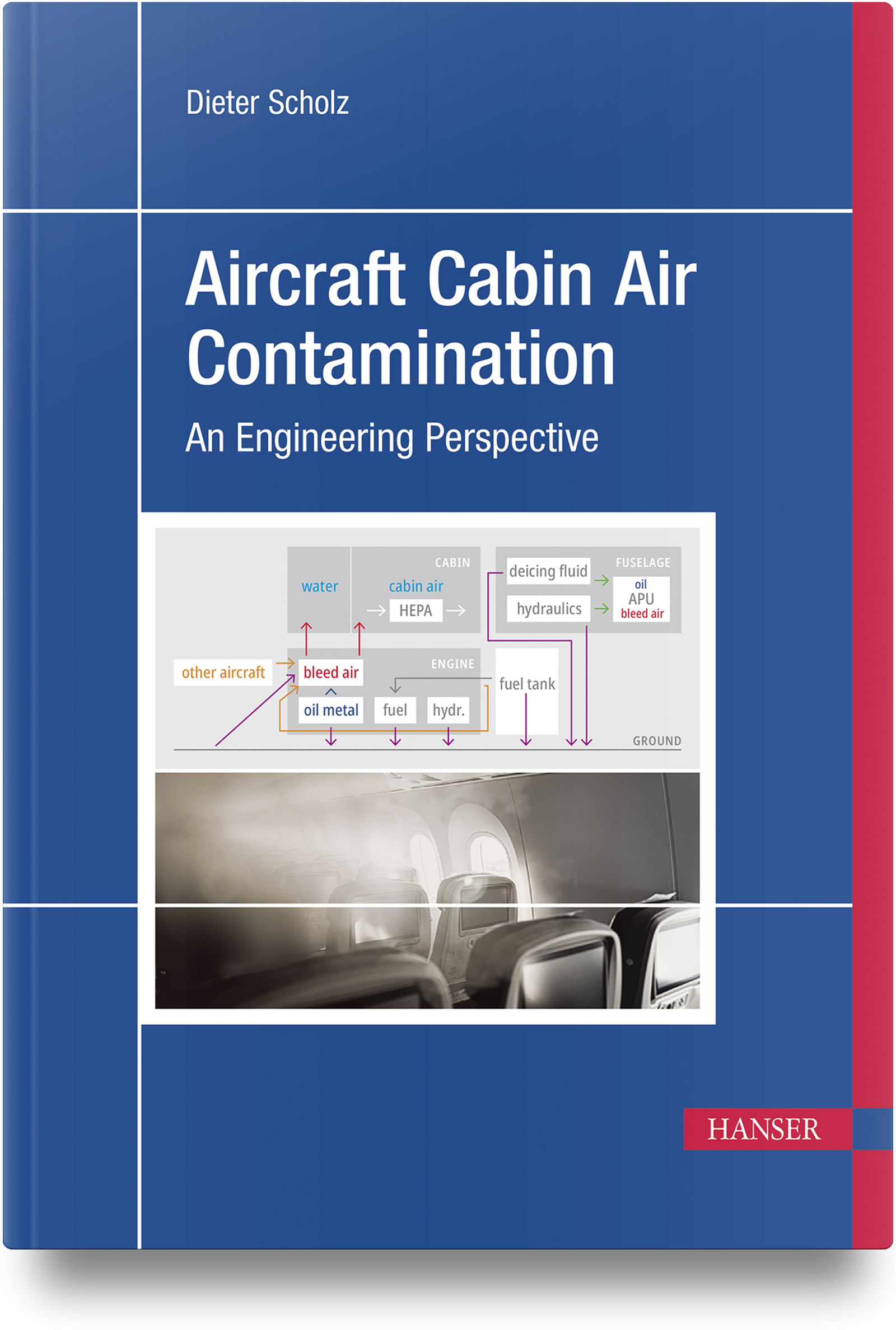- Grundlagen
- Maschinenbau allgemein
- Technische Mechanik
- Technische Thermodynamik
- Technische Optik
- Werkstoffe
- Management
- Konstruktion
- Konstruktion allgemein
- CATIA
- NX
- Pro/Engineer & Creo Parametric
- SolidWorks
- Inventor
- Weitere Systeme
- Sie sind hier:
- Fachbuch
- Maschinenbau
- Weitere Technikgebiete
- Luft- und Raumfahrttechnik
- ISBN: 978-3-446-48205-0
- Buchangaben: 1. Auflage, 01/2027
210 Seiten, Flexibler Einband, komplett in Farbe
For technical reasons, highly toxic chemicals are added to the oil used in jet engines. These substances leave their intended places and get distributed everywhere. Unfortunately, while spreading, the substances also arrive in the human body with health and flight safety consequences. All occupants are potentially affected, but predominantly the crew, who spend much more time in an airplane than even a frequent flyer. On the one hand they experience cabin air contamination events (fume events), which can lead to nausea, headache, breathing problems and more, on the other hand they are constantly exposed to low dose contamination which accumulates over time.
This book offers insights into this hotly debated topic from an engineering perspective. The author explains in detail why and how chemicals get into the cabin and what can be done to avoid aircraft cabin air contamination now and in the future.
For technical reasons, highly toxic chemicals are added to the oil used in jet engines. These substances leave their intended places and get distributed everywhere. Unfortunately, while spreading, the substances also arrive in the human body with health and flight safety consequences. All occupants are potentially affected, but predominantly the crew, who spend much more time in an airplane than even a frequent flyer. On the one hand they experience cabin air contamination events (fume events), which can lead to nausea, headache, breathing problems and more, on the other hand they are constantly exposed to low dose contamination which accumulates over time.
This book offers insights into this hotly debated topic from an engineering perspective. The author explains in detail why and how chemicals get into the cabin and what can be done to avoid aircraft cabin air contamination now and in the future.
Prof. Dr. Dieter Scholz ist Leiter Aircraft Design und Systems Group (AERO) und Professor für Flugzeugentwurf, Flugzeugsysteme und Flugmechanik an der HAW Hamburg.
Prof. Dr. Dieter Scholz ist Leiter Aircraft Design und Systems Group (AERO) und Professor für Flugzeugentwurf, Flugzeugsysteme und Flugmechanik an der HAW Hamburg.
Die Coverdateien dürfen Sie zur Bewerbung des Buches honorarfrei verwenden.
Die Coverdateien dürfen Sie zur Bewerbung des Buches honorarfrei verwenden.
Carl Hanser Verlag GmbH & Co KG
Vilshofener Str. 10
81679 München
E-Mail: info@hanser.de
Sicherheitshinweis entsprechend Art.9 Abs. 7 Satz 2 GPSR entbehrlich
Carl Hanser Verlag GmbH & Co KG
Vilshofener Str. 10
81679 München
E-Mail: info@hanser.de
Sicherheitshinweis entsprechend Art.9 Abs. 7 Satz 2 GPSR entbehrlich


